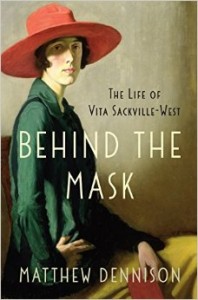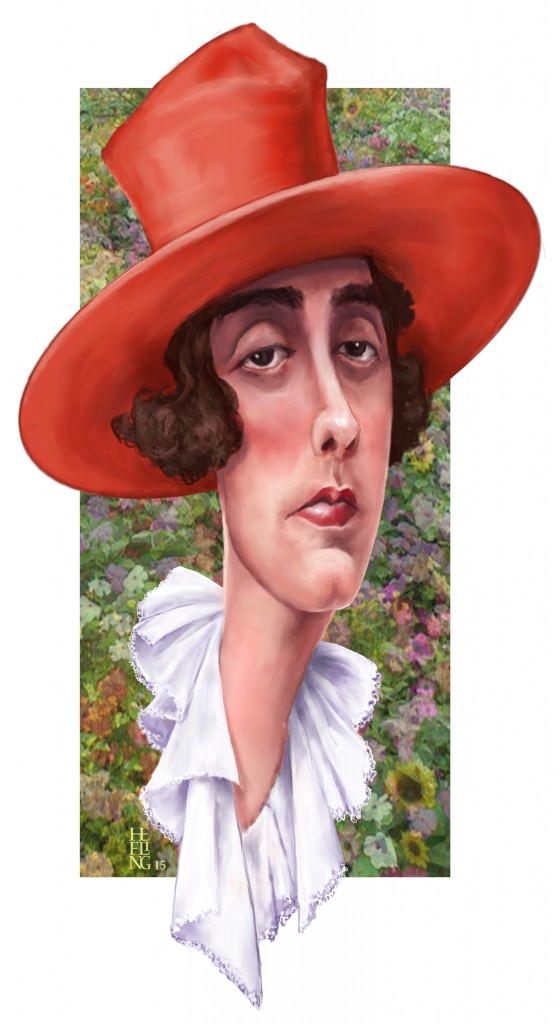 Behind the Mask: The Life of Vita Sackville-West
Behind the Mask: The Life of Vita Sackville-West
by Matthew Dennison
St. Martin’s Press. 384 pages, $29.99
VITA SACKVILLE-WEST rode the dragons of her life, as Matthew Dennison remarks in his new biography, with the aplomb of a “disposessed aristocrat in the twentieth century.” Several biographers have attempted to tell the story of Vita Sackville-West’s remarkable life, but only one book ever came close to embodying her incredible allure. That book was Orlando, a work of fiction by her lover Virginia Woolf, published in 1928.
Dennison’s biography, Behind the Mask: Vita Sackville-West, is chock full of archival materials, though much of it has been brought to light by previous biographers, including Suzanne Raitt in Vita and Virginia (1993). The best of these biographies is Victoria Glen-dinning’s superb 1983 Vita: The Life of Vita Sackville-West, which continues to set the standard for Sack-ville-West biographies.
Dennison spends the first several chapters digging in the cellar of Vita’s life in search of fault lines in her childhood psyche that can explain her nature. His study is grounded in Freudian psychology, some of which is outdated, such as the idea that myths and fairy tales shaped her self-perception. Like the lesbian artist Romaine Brooks, Sackville-West suffered the eccentricities of a mentally disturbed and unpredictable mother whom she alternately loved and hated. Her father was mainly absent, and when he did show up he scarcely knew how to be a parent. She was handed off to a series of nannies and, like many lonely children, retreated into the world of fantasy.
 Dennison’s painstaking research takes us from Sackville-West’s childhood through the Great Depression and two World Wars that changed everything for her generation. Over six somewhat rambling chapters, he documents Vita’s growing loathing for the new world and society she found herself living in. He presents strong reasons for her growing withdrawal from her former social life into one of gardening, diminished writing, and intermittently seeing various lovers and friends.
Dennison’s painstaking research takes us from Sackville-West’s childhood through the Great Depression and two World Wars that changed everything for her generation. Over six somewhat rambling chapters, he documents Vita’s growing loathing for the new world and society she found herself living in. He presents strong reasons for her growing withdrawal from her former social life into one of gardening, diminished writing, and intermittently seeing various lovers and friends.
There are descriptions of her life with husband Harold Nicolson. Dennison lingers over the gardens they planted and the tender things they said to each other over the course of their unconventional marriage. Dennison is at his best in his meticulous descriptions, which paint clear pictures of architectural and interior designs of the various houses—Knole, Long Barn, and Sissinghurst Castle—where she lived. Even so, the amount of minutiae that he packs into these chapters makes for a watching-paint-dry experience for much of the way.
A more serious objection is that Dennison shows little interest in or capacity for understanding the nature of the love between Sackville-West and the women she was intimate with. His portrait of Vita fails to take full stock of the complexity of lesbian friendships. He dwells on class boundaries and tedious clinical explanations for Vita’s personality traits, including her lesbianism. Indeed, Behind the Mask gives the impression that its author somewhat disapproves of Vita’s lesbian lifestyle and sexually open relationships. He represents her as an over-indulged, neglected child who fell in love with her ancestral legacy and a house called Knole. Then came the drama that followed her loss of Knole because she was born female, an event that profoundly shaped her personality and her view of life ever after. At one point he describes Vita as a “spider” spinning her web to ensnare various lovers for sexual pleasure or emotional resources, only to abandon them when their appeal ran dry. The picture that Dennison paints is not a particularly pretty one.
As with most larger-than-life personalities, Vita lived her life to suit herself and, in the bargain, became something of a lesbian icon. Her affair with Violet Keppel, which is described by her son, Nigel Nicolson, in Portrait of a Marriage (1973), had a significant impact on her life. Violet too was larger than life—witty, flirtatious, fun-loving—a woman who entertained luxuriously and knew all of high society. All this is revealed in Vita’s best novel, All Passion Spent (1930), in which she remarks that “[p]leasure to her was entirely a private and a secret joke, intense, redolent, but easily bruised as the petals of a gardenia.” Naturally, Vita’s appetites caused her to hurt herself and others throughout her life. She could be selfish and occasionally cruel, while jilted lovers could be physically violent and litigious. Like other human beings, she was capable of deception and outright lying.
However, neither her selfishness nor her cruelty was premeditated, and she was without pettiness. As with most lifelong romantics, her ability to sustain happiness was highly conditional on her life circumstances. She could be irresistibly charming, irrepressibly alive. The friends that remained loyal to her recalled her as noble and grand; she did everything with a largeness and generosity of spirit.
In a fashion similar to Romaine Brooks, the expatriate American painter and lifelong lover of Natalie Barney, Vita’s need for privacy and her passion for keeping secrets bordered on the obsessive. Even her immediate family had no idea with whom she was intimate or what she was working on from one month or year to the next. The sad truth is that, because of sexism and homophobia, and despite her upper-class status, Vita was at a disadvantage right from the start.
Throughout this biography, Dennison’s sympathies are clearly with Harold Nicolson and Vita’s sons. My criticisms do not diminish the author’s solid historical research. They simply acknowledge the inherent challenges for a heterosexual man trying to understand lesbian lives and women’s love for each other. What this means is that the field is still open for another insightful book on Vita Sackville-West with a different perspective on this fascinating, spirited, and inspiring lesbian icon.
Cassandra Langer, a frequent contributor to these pages, is a freelance writer based in New York City.






